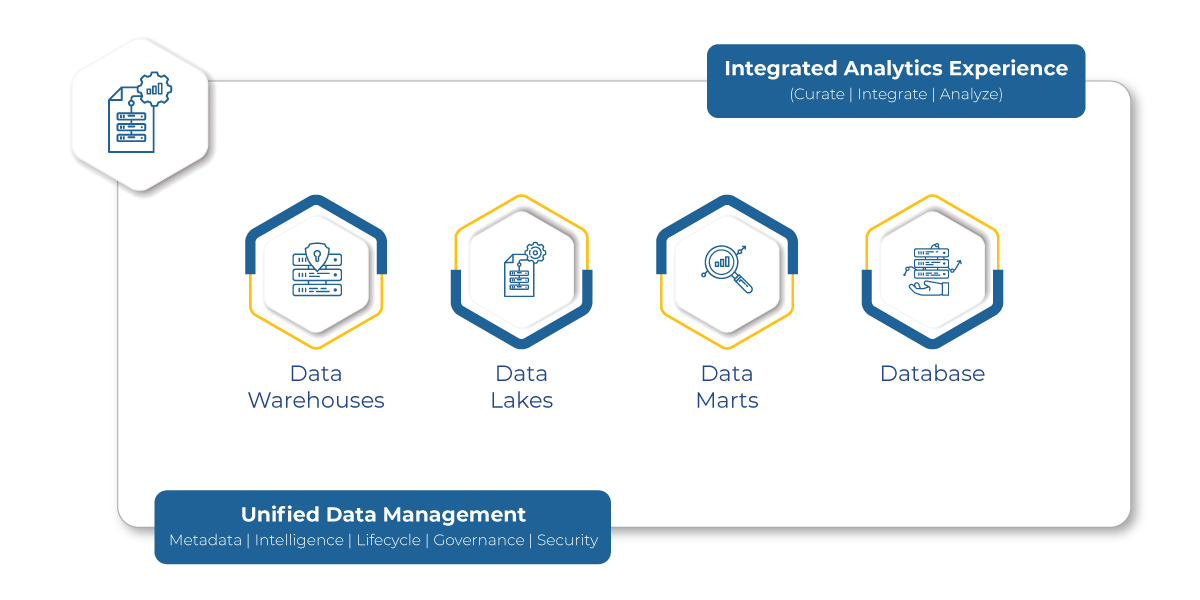Introduction
Have you ever wondered how much data is generated every day? IDC research states that worldwide data creation will grow to an enormous 175 zettabytes (ZB) by 2025. The digital explosion has led to the emergence of diverse data generators across the enterprise and consumers landscapes. Amongst this mix, there are thousands of cloud apps, websites, smartphones, and social media networks, with each of these sources generating useful data. While a data deluge is round the corner, businesses are still struggling to collect, store, and organize it in a way that will ensure easy accessibility and usability.
A report suggests that unreliable data sources have impacted the productivity of 90% of data professionals, over 80% of data analysts face problems with outdated data and above 60% of data workers lose out on crucial work hours due to uncleaned data. While the data gaps are mostly due to inefficient organizational structures and architectural decisions, businesses are keen to switch to the Cloud to modernize their data analytics systems. The solution to these problems can be resolved by resorting to decisions around data ownership and storage mechanisms.
What is unified data analytics?
Unified data analytics is the result of collecting and analyzing data from different sources to get a single view in one place. It offers highly accurate answers to business-critical questions and a 360-degree view of all the organizational activities and metrics, which in turn enables to make ROI-driven decisions.
Here, data processing collaborates with AI enabling enterprises to build data pipelines across siloed data storage systems, create labelled datasets for model building and ramp up their AI initiatives. Also, it allows the data engineers and data scientists to collaborate across the entire development-to-production lifecycle.
What is a unified data analytics platform?

A futuristic and intelligent data analytics platform offers the competencies of a data warehouse and data lake, supported by closer integration into the AI platform. Built for the “complete data life cycle” — ranging from the systems that are responsible for running an enterprise to AI and ML tools that forecast and automate its future, a unified data analytics platform can process real-time data from innumerable streaming events and offer insight up to milliseconds to share quicker responses to the evolving client demands.
Additionally, it can optimize your customer experiences and organizational decision-making, empowering businesses to remove the possible gap between prescriptive and descriptive analytics without hiring a new team.
While the popularity of unified data analytics platforms has grown a great deal in recent years, their usability by businesses of all types remains questionable. Reason? Despite the cloud’s growing popularity, many organizations continue to use legacy systems that they need to migrate, port, or patch before they are completely replaced.
Key benefits of cloud-based unified data analytics platforms
- Focus on analytics instead of infrastructure
- Solution available for all stages of the data analytics lifecycle
- Builds a robust data foundation for machine learning
- Allows the use of open source technologies
- Ability to scale as per your organizational need
Conclusion
Industry insiders believe the shift toward unified data analytics is here to stay as it delivers measurable benefits to organizational growth. To put things into perspective, based on the cloud platform you choose, the total cost of ownership can reduce by 30-80% in comparison to on-prem deployments.
Want to become a data-driven enterprise? Implement a unified analytics data platform that meets your business and technical requirements. Their proven competency in simplifying the enterprise data infrastructure by merging key capabilities of data lakes and data warehouses is a no-brainer. Data compliance, security, and significantly curtailed DevOps costs are some of the other added advantages of using a unified data analytics platform.
To learn in-depth about the core elements of a unified analytics data platform, migration paths to legacy modernization, and how Forsys helped a global technology leader meet their unified data analytics needs, get in touch now.

